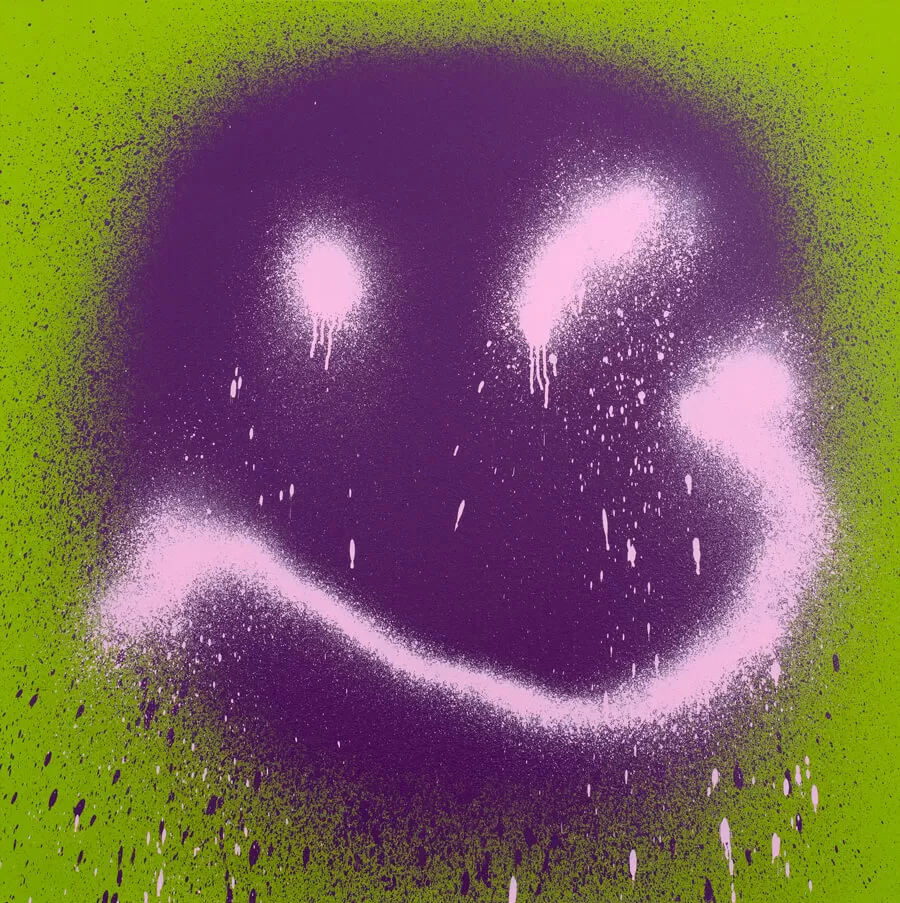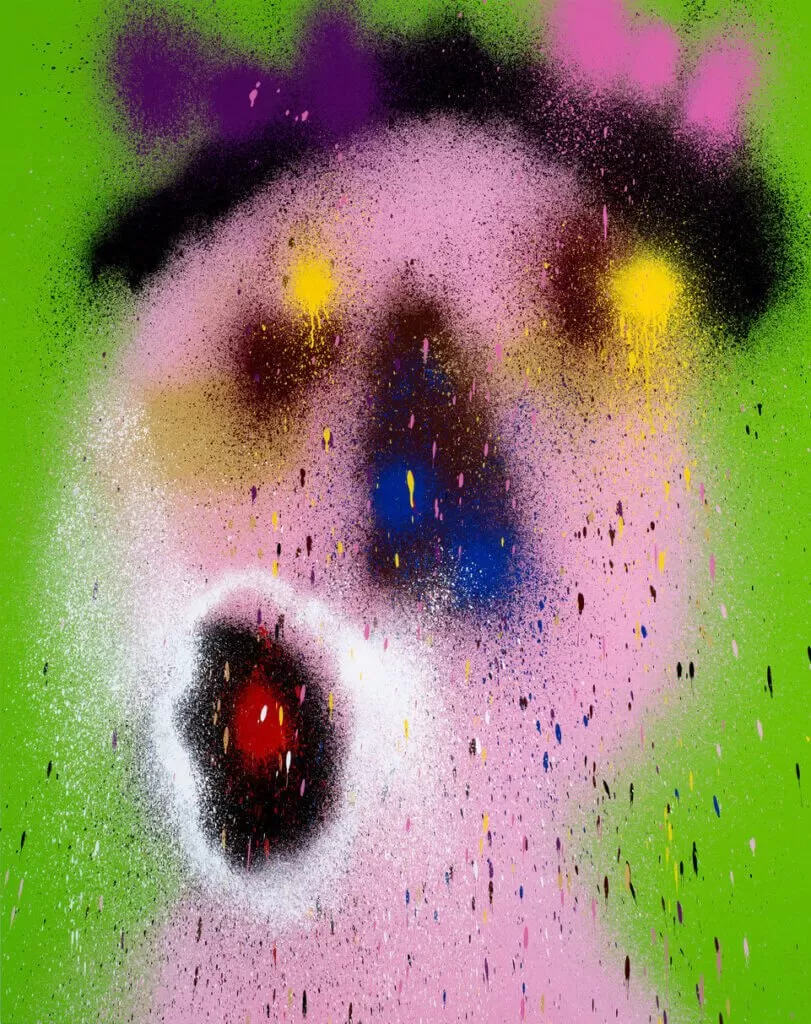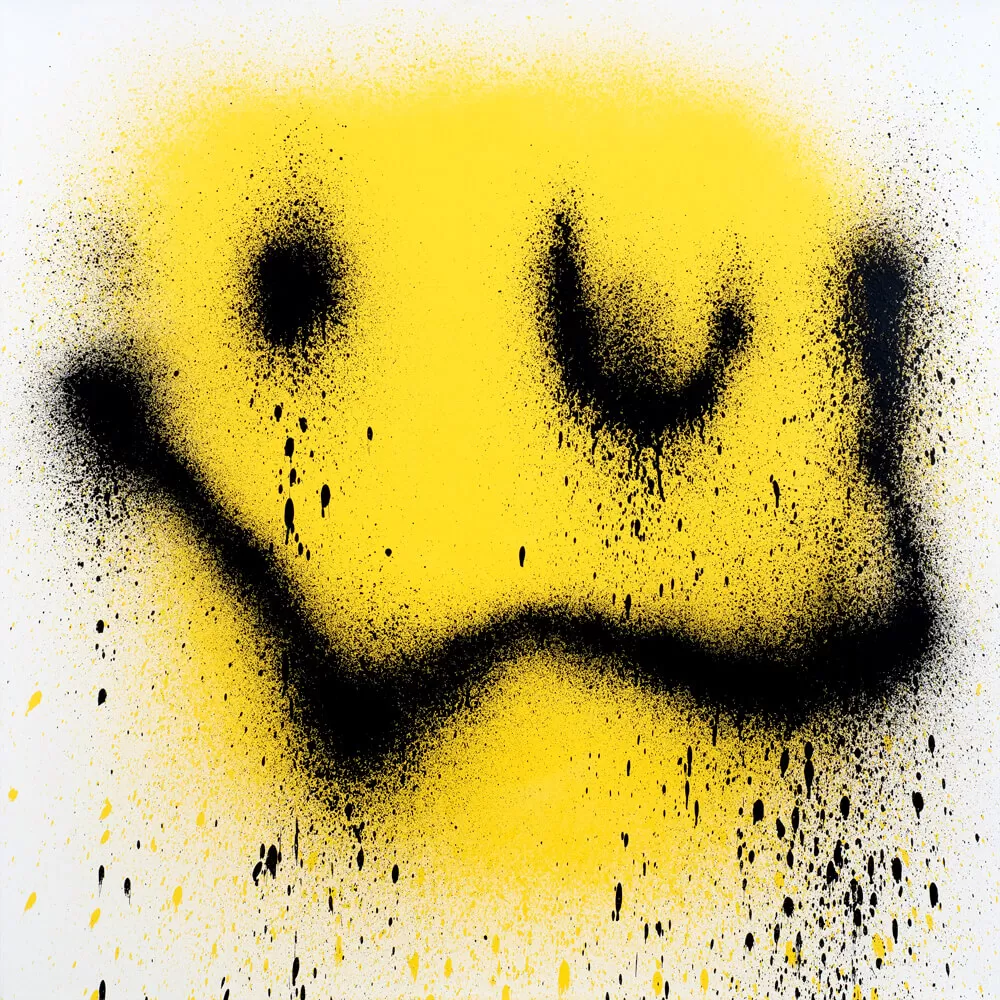Japanese American artist KATSU is exhibiting for the first time in the UK at the recently opened OMNI Gallery. From dissident beginnings as a graffiti writer on the streets of New York in the early 2000s, to developing a career as a world-renowned artist, KATSU’s artistic output has consistently channelled an ever-intriguing, mischievous, and countercultural spirit. In addition to his solo work, KATSU has also collaborated with Virgil Abloh’s Off White.
For this exhibition MECHA, the artist’s first in Europe, KATSU takes on that which is reframing our very existence –rapidly evolving technology, the primacy of digital media and the assent of machines. Issues emerge in relation to the precarity of digital privacy, along with a sense of pervasive anxiety provoked by technologies’ potential for misuse. Through use of the very machinery some have come to fear, including drones, KATSU brings to the fore topical debates and concerns around our ever-modernising world.
Q: How did the idea for creating artwork using drones come about?
A: Picture making has always led me to the notion of automation and mass production. The works of Warhol, shitty bubble jet printers, stenciling and video games all involved manufacturing as the spirit of the rendering. Drones naturally became a rational assistant in the painting process for me when I stopped the separations between my work as a creative technologist and as a graffiti artist. The drone as a concept appeared as a sentient being and I decided I needed that collaboration. The drone could do so much more than my limited body. The drone also has incredible limitations.
Q: What about the specific technology you have applied and developed to make these paintings?
A: Paintings for me are very loosely defined. I’ve used a wide range of drones, stationary drones (as I define them), machine learning and virtual reality. My enamel based canvases use drone technology and this means fully autonomous rendering, semi autonomous and use of a transmitter. The drone is always governed by rich tracking and spatial sensing tech so all types of uses carry a strong aesthetic presence of the drone. Because MECHA is a show focused almost entirely on enamel works I’ll speak only briefly about the other tech.
The dataset is the soul of an artist’s application of AI to any artwork. My Criminals series were generated by over training neural networks using rare and vintage datasets I was able to scrape from law enforcement websites. The results are ghoulish and almost cubist portraits. I’ve also painted using 3D scanners archiving the desolate, drug ridden environments of San Francisco. Hand held scanners can act as paintbrush capturing in strokes and revealing verticis.
Q: Tell us about the process of developing the equipment and these methods?
A: The drone tech is as critical as the work it creates. It has been a long evolution from hacked consumer camera drones to custom pcb, and entirely custom built painting devices that run on computer vision and multiple layered sensory awareness. The paintings need to always retain the camouflage of human touch.
The drone paintings have never been about achieving photographic resolution rather they need to conceal and ask the question “what is made by man and what is made by technology?” The KATSURU project is an on going effort to eventually release both open source and consumer grade painting drones for the world to use. KATSURU is a collaborative process between artist and robotics engineers. Also I care nothing about locking the tech in a cage.
Q: What do you see as the relationship between yourself as author of the works and the technology you use to fabricate them?
A: The picture creating process is a long series of compromises as the actual artist in control. This control over details, gesture and composition is handed off and I am often directed by the tech and not in control.
There is a large amount of dictation done by the drone. I have to let go and that can be a very combative experience mentally. There is a term in video gaming known as “fiero” this is the closest I can come to the moment when the drone and I are truly synced in making the painting. Whether the drone is fully autonomous or semi. Why does it matter what was painted by me?
Q: How do you think technology and digital possibilities are shaping the future of art?
A: The future of art is not driven by processors and binary. For my work specifically I imagine this digital organism the size of a small house that is fed medium and expels truly digital works.
The blockchain, machine learning, robotics, these will certainly be torn apart and probed. The question to ask is really, “where will we be experiencing life?” once we understand this the future of art may be severely bi-partisan — one physical and one in the “metaverse” (fart sound).
KATSU: Mecha
Until 16 October 2022
OMNI Gallery 56–57 Eastcastle Street
London W1W 8EG
https://www.instagram.com/katsubot/
©2022 KATSU











